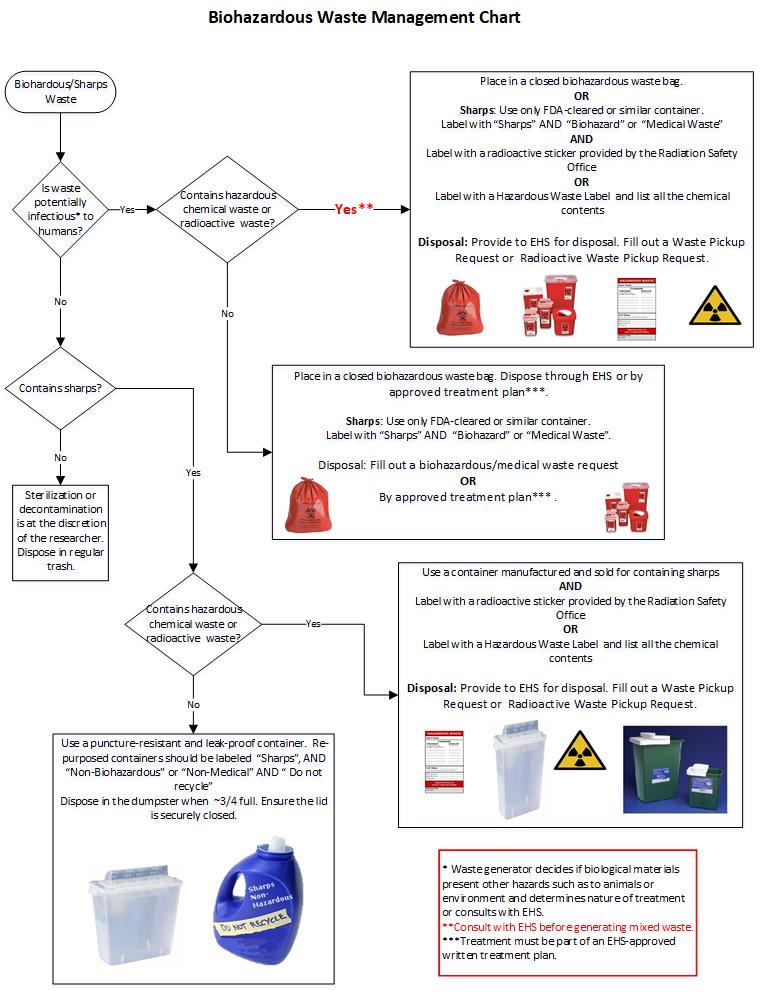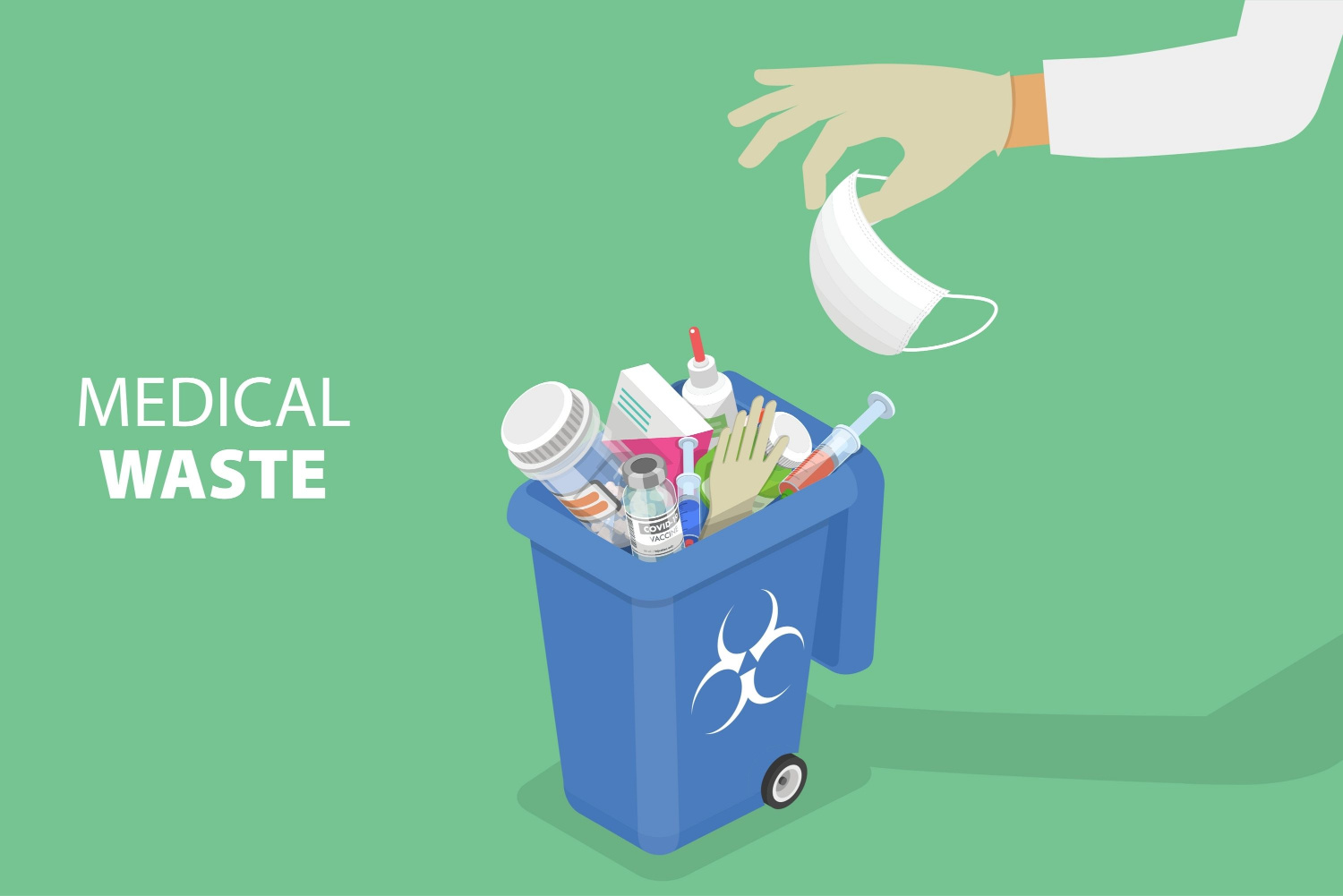Tailored Medical Waste Disposal Service: Meeting Healthcare Conformity Requirements
Wiki Article
Conformity and Regulations for Medical Waste Disposal
Conformity and policies for medical garbage disposal play a critical role in making certain the safety and security and well-being of both health care professionals and the general public. Appropriate monitoring of clinical waste is important to avoid the spread of infections, protect the environment, and preserve public health and wellness. This requires adherence to certain guidelines and protocols stated by regulative agencies and bodies. These policies include various aspects, including the classification and segregation of clinical waste, appropriate storage and dealing with procedures, as well as transport and disposal approaches. By following these laws, healthcare centers can lessen the threat of contamination and potential injury to people and the setting. This short article will certainly check out the significance of compliance and give a summary of the crucial laws governing medical garbage disposal.Value of Compliance
The significance of compliance with regulations for medical waste disposal can not be overemphasized. Proper disposal of medical waste is vital for making certain the security and wellness of health care workers, patients, and the public. Clinical waste, that includes items such as made use of needles, infected gloves, and biomedical waste, can position serious wellness threats if not handled and dealt with properly.Conformity with regulations ensures that clinical waste is handled in a manner that minimizes the possibility for exposure to harmful materials and contagious conditions - medical waste disposal service. It assists prevent the spread of infections, such as HIV, liver disease B and C, and other bloodborne virus. Compliance additionally plays an essential role in shielding the atmosphere by preventing contamination of water resources, dirt, and air
Failure to abide by policies can lead to extreme consequences for medical care facilities, including penalties, legal action, and damages to their credibility. Additionally, non-compliance may endanger the health and safety and security of health care workers, patients, and the neighborhood.
Conformity with policies for medical garbage disposal requires adherence to specific standards and protocols. These might include appropriate segregation, packaging, labeling, and storage space of medical waste. It likewise includes making use of authorized disposal methods, such as landfilling, incineration, or autoclaving, depending on the kind of waste.
Governing Agencies and Bodies
Regulative agencies and bodies play a vital duty in supervising compliance with policies for medical garbage disposal. These companies are accountable for setting methods, criteria, and standards to make certain the risk-free and appropriate handling of medical waste. They apply and monitor compliance to secure public health and wellness and the environment.One of the most prominent regulative agencies in the United States is the Environmental Security Firm (EPA) The EPA is accountable for regulating the storage space, transport, therapy, and disposal of medical waste. They establish guidelines for waste generators, carriers, and treatment facilities to comply with, making certain that all essential precautions are taken to prevent the spread of diseases and contamination.
One more essential governing body is the Occupational Safety And Security and Health And Wellness Administration (OSHA) OSHA sets standards and regulations to shield employees from occupational dangers, including those related to clinical waste. WasteX Medical Waste Disposal. They supply guidelines for the safe handling and disposal of clinical waste to protect employees in healthcare facilities
Along with these federal agencies, specific states additionally have their very own regulative bodies that manage clinical garbage disposal. These companies might have their own particular regulations and demands that must be adhered to.

Classification and Partition of Medical Waste
To make sure proper administration of medical waste, it is necessary to identify and segregate it according to established protocols and standards. medical waste disposal. Category and segregation play an essential function in minimizing the danger of infection, shielding the environment, and guaranteeing the safety of health care employees and the publicMedical waste is classified into different classifications based on its possible risk level. These groups include transmittable waste, pathological waste, sharps waste, pharmaceutical waste, chemical waste, and contaminated waste. Each category needs details handling, transport, storage space, and disposal approaches to lessen the threat of direct exposure and contamination.
Segregation of clinical waste entails dividing different sorts of waste at the source. This process ensures that waste with various danger degrees is not blended, lowering the possibility for cross-contamination and making disposal treatments extra efficient. Correct segregation is achieved with making use of color-coded tags and containers, which assist health care workers and waste management personnel identify and handle each kind of waste correctly.
In enhancement to classification and segregation, medical care facilities have to also follow local, state, and government policies regarding clinical waste monitoring. These laws outline certain requirements for storage space, transportation, therapy, and last disposal of clinical waste, guaranteeing conformity and preserving public health and wellness and safety and security.
Appropriate Storage Space and Taking Care Of Treatments
Correct storage space and managing procedures play an important function in guaranteeing the compliant and secure administration of medical waste. Clinical waste, which consists of items such as made use of syringes, infected handwear covers, and ran out medicines, can pose significant health and wellness and environmental threats if not taken care of properly. For that reason, it is crucial for health care facilities and various other generators of medical waste to apply strict storage space and dealing with methods.
To start with, clinical waste should be saved in durable, watertight containers that are especially developed for this objective. These containers should be classified with the universal biohazard sign and words "medical waste" to clearly show the contents. Furthermore, the containers must be maintained securely near protect against any type of possible leak or spillage.
Moreover, it is essential to segregate different kinds of clinical waste Visit Website to avoid cross-contamination. Sharps, such as needles and scalpels, need to be stored in puncture-resistant containers to reduce the threat of injuries - WasteX Medical Waste Disposal. Chemical waste, such as solvents and anti-bacterials, need to be stored individually from other types of medical waste to avoid unsafe direct exposures or chemical responses

Transportation and Disposal Methods
Healthcare centers should make certain the safe transport and appropriate disposal of their medical waste to follow laws and safeguard public health and wellness. Transport and disposal techniques play an essential duty in protecting against the spread of contagious conditions and reducing the environmental effect of clinical waste.
To transfer clinical waste, healthcare facilities need to utilize puncture-resistant and watertight containers that are classified with the biohazard sign. These containers need to be securely secured to avoid any kind of leak throughout transport. Additionally, medical care facilities must develop protocols for the transport process, including the usage of committed cars and skilled workers.
As soon as the clinical waste reaches the disposal center, it goes through numerous methods of therapy. One usual method is incineration, which involves burning the waste at heats to destroy pathogens and minimize the quantity of waste. Another method is autoclaving, which utilizes vapor and stress to sanitize the waste. After therapy, the waste is typically sent to a landfill or a waste-to-energy facility for final disposal.
It is necessary for medical care centers to collaborate with qualified and allowed waste administration business to make sure appropriate transportation and disposal of medical waste. These companies have the experience and sources to take care of clinical waste safely and in compliance with regulations.
Conclusion
To conclude, conformity with guidelines for medical waste disposal is of utmost significance to ensure public wellness and safety and security. Regulative companies and bodies play a crucial function in applying these regulations. Proper category and partition of medical waste, along with complying with proper storage and taking care of treatments, are necessary to avoid contamination and the spread of conditions. Adequate transport and disposal methods have to be applied to minimize environmental effects. Generally, adherence to conformity and policies is required to effectively handle medical waste.Clinical waste, which includes products such as made use of needles, contaminated handwear covers, and biomedical waste, can pose severe health dangers if not taken care of and disposed of correctly.
These groups include transmittable waste, pathological waste, sharps waste, pharmaceutical waste, chemical waste, and radioactive waste.Partition of clinical waste involves separating various kinds of waste at the source. Appropriate partition is attained through the use of color-coded tags and containers, which help health care employees and waste management workers deal with each kind and recognize of waste appropriately.
Chemical waste, such as solvents and disinfectants, must be saved independently from various other types of medical waste to avoid hazardous exposures or chemical reactions.
Report this wiki page